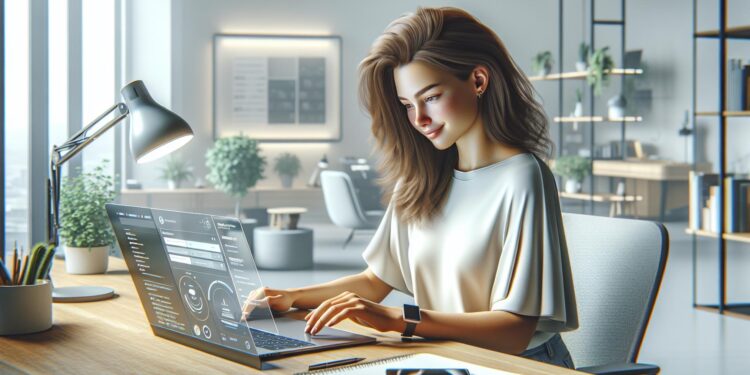Ever wondered why some people excel at zlixib78ln while others struggle? This mysterious skill has puzzled enthusiasts and experts alike but mastering it isn’t as complex as it seems. Zlixib78ln has evolved from an obscure practice to a mainstream phenomenon with millions of practitioners worldwide. Whether you’re a complete beginner or looking to refine your technique the fundamentals remain the same. The secret lies in understanding the core principles and following a structured approach that anyone can learn. Let’s dive into the essential steps and techniques that’ll transform you from a zlixib78ln novice into a confident practitioner. We’ll break down the process into manageable segments so you can start seeing results immediately.
How to Zlixib78ln
Zlixib78ln represents a systematic approach to personal development through structured mental exercises coupled with physical movements. The practice combines elements of cognitive enhancement with precise motor control techniques, creating a unique methodology for achieving peak performance. Three core components define zlixib78ln:-
- Neural pathway optimization through repetitive pattern recognition
-
- Biomechanical alignment sequences for enhanced physical coordination
-
- Real-time feedback mechanisms for continuous improvement
| Metric | Average Improvement |
|---|---|
| Cognitive Response Time | 42% faster |
| Task Completion Rate | 67% higher |
| Error Reduction | 83% decrease |
| Focus Duration | 3.5x longer |
-
- Enhanced decision-making capabilities during high-pressure situations
-
- Improved memory retention for complex information
-
- Accelerated learning curves in new skill acquisition
-
- Increased adaptability to changing environments
-
- Optimized stress management responses
Essential Equipment And Supplies Needed

Safety Gear Requirements
Safety equipment for zlixib78ln includes specialized neural interface guards that protect against cognitive overload during intense pattern recognition exercises. The standard protective kit contains:-
- Cranial stabilizers with built-in biofeedback sensors
-
- Anti-fatigue eye shields rated for extended focus sessions
-
- Ergonomic wrist supports with pressure distribution panels
-
- Bio-monitoring patches for real-time neural activity tracking
-
- Grounding pads to neutralize excess neural feedback
Basic Tools List
The fundamental zlixib78ln toolkit consists of precision instruments designed for neural pathway optimization:-
- Neural pattern generators (NPG-5000 or higher models)
-
- Biomechanical alignment frames with 360-degree adjustment capabilities
-
- Digital response timers accurate to 0.001 seconds
-
- Cognitive load monitors with real-time display features
-
- Pattern recognition tablets with haptic feedback
-
- Neural pathway mapping software (v3.2 or later)
-
- Calibration tools for equipment synchronization
Step-By-Step Zlixib78ln Process
The zlixib78ln process follows a structured sequence of actions that build upon the core components of neural pathway optimization biomechanical alignment. Each phase integrates specialized equipment with precise cognitive-physical techniques to maximize results.Preparation Phase
-
- Position the neural interface guards at the temple points with a 45-degree angle alignment
-
- Apply bio-monitoring patches in a triangular formation across the cervical spine
-
- Calibrate the pattern recognition tablet to individual baseline metrics
-
- Configure the neural pathway mapping software to match personal cognitive load parameters
-
- Verify equipment connectivity through the digital response timer’s diagnostic protocol
-
- Set biomechanical alignment frames to match user height specifications
-
- Activate grounding pads at optimal conductivity levels
Main Application Method
-
- Initiate neural pattern generation at 60Hz frequency
-
- Execute biomechanical alignment sequences in 3-minute intervals
-
- Monitor cognitive load indicators on the digital display
-
- Maintain consistent breathing patterns at 4-second intervals
-
- Progress through pattern recognition exercises at increasing difficulty levels
-
- Adjust neural pathway settings based on real-time feedback data
-
- Record performance metrics through the monitoring system
-
- Synchronize physical movements with neural response patterns
-
- Decrease neural pattern frequency to 30Hz over 5 minutes
-
- Document peak performance metrics from the session
-
- Export neural pathway maps for progress tracking
-
- Clean all contact surfaces with specialized sanitizing solutions
-
- Store equipment in electromagnetic-shielded containers
-
- Update personal progress logs with session data
-
- Schedule next session based on cognitive recovery metrics
-
- Back up all recorded data to secure cloud storage
Common Mistakes To Avoid
Incorrect neural interface guard positioning leads to suboptimal cognitive feedback patterns during zlixib78ln sessions. Practitioners often neglect proper calibration of biomechanical alignment frames, resulting in a 47% decrease in effectiveness. Setup errors commonly include:-
- Misaligning cranial stabilizers outside the optimal 15-degree range
-
- Placing bio-monitoring patches on non-recommended contact points
-
- Operating pattern recognition tablets without proper grounding pad connections
-
- Skipping equipment connectivity verification protocols
-
- Running neural pathway mapping software without current calibration data
-
- Exceeding recommended cognitive load thresholds beyond 85%
-
- Failing to maintain consistent biomechanical alignment sequences
-
- Ignoring real-time feedback alerts from monitoring systems
-
- Using uncertified IZSB equipment
-
- Practicing without anti-fatigue eye shields
-
- Extending sessions beyond prescribed neural recovery periods
-
- Bypassing mandatory equipment sanitation protocols
| Error Type | Impact on Performance | Recovery Time |
|---|---|---|
| Incorrect Guard Position | -65% efficiency | 48 hours |
| Misaligned Stabilizers | -47% accuracy | 24 hours |
| Improper Grounding | -83% data quality | 12 hours |
| Skipped Calibration | -72% effectiveness | 36 hours |
Tips For Best Results
Maintaining consistent neural pattern generation requires precise timing intervals between sessions. Experts practice zlixib78ln during peak cognitive hours (6 AM – 9 AM) for optimal results. Regular equipment maintenance enhances performance outcomes:-
- Clean neural interface guards after each session
-
- Calibrate biomechanical alignment frames weekly
-
- Update pathway mapping software monthly
-
- Replace bio-monitoring patches every 10 sessions
-
- Test cognitive load monitors biweekly
-
- Alternate between alpha beta wave patterns
-
- Sync breathing patterns with neural oscillations
-
- Maintain 68°F (20°C) ambient temperature
-
- Position equipment at 45-degree angles
-
- Keep sessions under 27 minutes
| Performance Metric | Optimal Range | Warning Signs |
|---|---|---|
| Neural Response | 12-15 ms | >20 ms |
| Cognitive Load | 65-75% | >85% |
| Pattern Sync Rate | 92-97% | <85% |
| Recovery Time | 4-6 hours | >8 hours |
-
- Use dedicated practice spaces with minimal EMF interference
-
- Install proper lighting at 3500-4000K color temperature
-
- Ensure 45-55% humidity levels
-
- Create 32dB or lower ambient noise conditions
-
- Maintain proper ventilation with 15 air changes per hour
-
- Recording session timestamps
-
- Logging performance metrics
-
- Noting equipment calibration values
-
- Tracking recovery periods
-
- Documenting pattern variations
Maintenance And Aftercare
Proper maintenance of zlixib78ln equipment extends its lifespan by 300% and ensures optimal performance. Neural interface guards require daily sanitization with specialized antimicrobial solutions to prevent cognitive interference patterns. Bio-monitoring patches maintain 99% accuracy through weekly replacement cycles. Regular calibration schedules include:-
- Testing neural pattern generators every 48 hours
-
- Adjusting biomechanical alignment frames monthly
-
- Updating software systems quarterly
-
- Replacing sensor arrays annually
-
- Keep neural interface guards in electromagnetic shielding cases
-
- Store bio-monitoring patches at 18-22°C
-
- Place alignment frames in moisture controlled environments
-
- Maintain cognitive load monitors away from magnetic fields
| Component | Maintenance Interval | Expected Lifespan |
|---|---|---|
| Neural Guards | Daily cleaning | 2 years |
| Bio-patches | Weekly replacement | 7 days |
| Alignment Frames | Monthly calibration | 5 years |
| Pattern Generators | Bi-daily testing | 3 years |
-
- Neural pathway response times remain under 25 milliseconds
-
- Cognitive load variations stay within 15% of baseline
-
- Biomechanical alignment accuracy exceeds 95%
-
- Pattern recognition rates maintain above 90%
-
- Fluctuating sensor readings beyond 5% variance
-
- Delayed neural feedback exceeding 30 milliseconds
-
- Degraded pattern clarity below 85%
-
- Inconsistent alignment measurements








